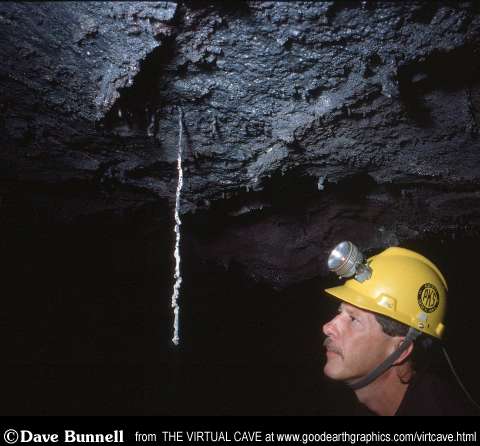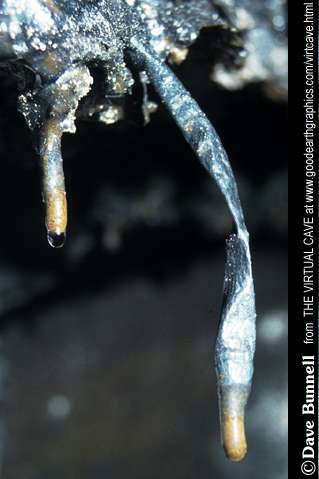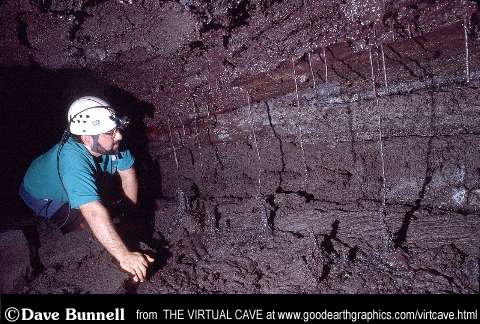

| Tubular lava stalactites are common in many lava tubes
and have a concentric tubular shape, are (initially) hollow, and range
in diameter from .4 to 1 cm. They are formed by "segregations extruded
by expanding gas into cave passages" (Allred & Allred, 1998) as the
lava tube cools. In the cooling walls of the cave, some minerals solidify
first, forming a coarse, porous matrix. Boiling causes gases to force
the remaining segregated liguid material out of the walls, forming tubular
lava stalactites. Growth rings are found on the skin of the stalactites,
each ring formed from dripping. Considerable material may be carried out
of the stalactite and pile up on the floor beneath, forming a drip
stalagmite. In the first photo a single stalactite shows a bit of vermiform character, but doesn't full grade into a tubular lava helictite. The middle photo shows a stalactite that deflated when either the hot gases filling it suddenly escaped, or draining of liquid lava caused it to collapse. The lower photo shows a group of stalactites that have merged with their respective drip stalagmites to form the analogy of a column as found in limestone caves. |



| Back to: | |
 |
Created: August 4, 2000
Author: Dave Bunnell |